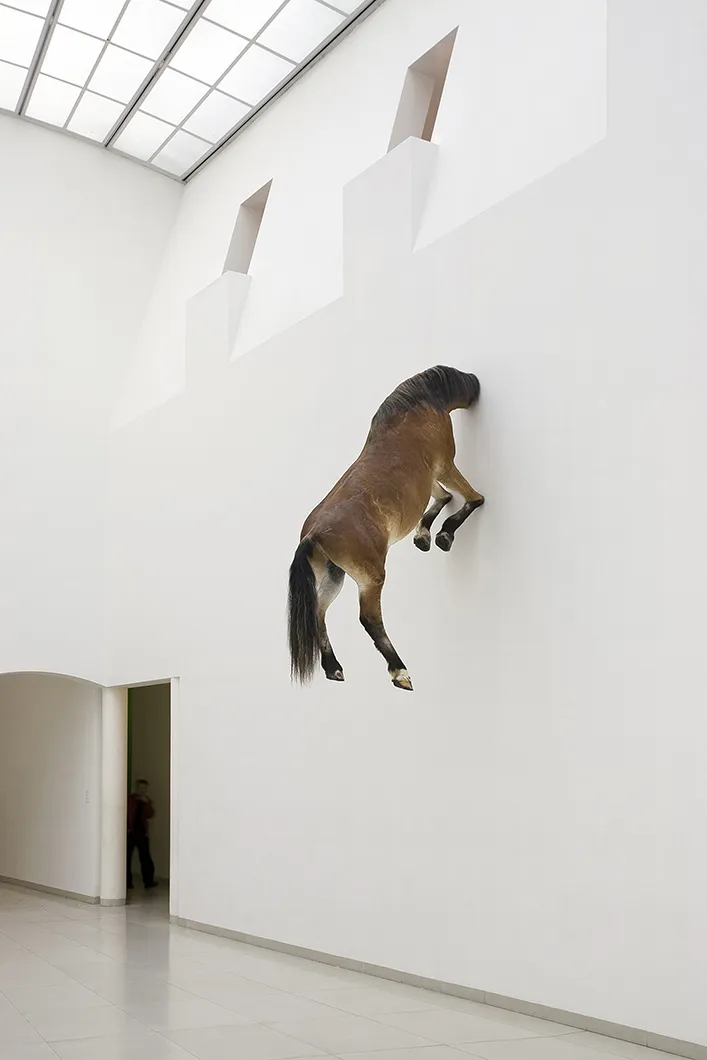In partnership with MiCodmc, a selection of establishments ripe for discovery during the 63rd edition of the Salone del Mobile.Milano, from 8th to 13th April

Maurizio Cattelan, Untitled 1998, Ph Caroline Minjolle, Beyeler 2019
The Last Judgment, Maurizio Cattelan’s first solo show in China has opened at Beijing’s UCCA Center: a collection of thirty works that trace the career of the most famous Italian artist in the world …
The Center of Contemporary Art in Beijing (UCCA) is one of the Chinese capital’s leading art institutions. Philip Tinari, director of the museum since 2011 has steered its transition from private collection to museum hub with a number of different venues. The UCCA is about to hold the first great solo exhibition by the Italian artist Maurizio Cattelan, regarded as one of the most influential of the 20th and 21st century. Born in Padua in 1960, Cattelan has been making his mark on the Italian visual scene since the 1990s, his power to communicate and - at times – shock, rapidly making him known outside Italy and in all the leading international art centres.

Maurizio Cattelan, Untitled 2001, Ph Attilio Maranzano
Cattelan’s pieces, designed to unsettle the viewer, capture the universality of the human condition through both irony and tragedy. From the outset, he has conceived images and situations that need no comment or do not lend themselves easily to didactic interpretation, but unfailingly manage to trigger conflicting reflections and points of view. Subjects such as fear of failure, escape, disappearance, the deconstruction of the myths and altars of art and the creation of self-portraits depicting Cattelan as a modern Commedia dell’Arte mask, loved and loathed in equal measure, yet invariably capable of calibrating forms and situations that ramp up the heat of their friendly/hostile reception by viewers and in places in which his work is shown.
Cattelan’s solo show, The Last Judgment is being curated by Francesco Bonami, a critic and curator with similar theatrical qualities who has followed the artist’s rise right from the off and has written several books on his oeuvre. The exhibition is conceived like a journey into the artist’s mind and vision – in all his works, Cattelan digs deep into human experience to reveal the fears and emotions that govern our everyday existence. We also saw it recently in the monumental, dark monolith conceived for the exhibition Blind at Milan’s Hangar Bicocca, which looks almost like a sort of living testament to his career, a narrative that started with one of his very early works – on exhibit in Beijing – the small framed photograph Lessico Familiare (1989), the first in that lengthy series of self-portraits and “doubles” that were to continue in various forms, materials and techniques, right up to the sleeping marble sculpture (Breath, 2021) in the Milan show. The almost 30 works in the exhibition introduce his very personal vocabulary to the Chinese people, in a constant blend of artistic inspiration and communication, bringing art and the advertising world and the media ever closer, as notably evidenced in the Open section of the Venice Biennale in 1993 when he rented out his space to an advertising agency. Since that initial invitation, Cattelan has been invited to many more Biennales, each time creating works that contrive to signify both his presence and his absence.
Beuys, Picasso, Hitler, Pope John Paul II and other 20th century icons have been transfigured and overturned, dethroned and deprived of their symbolic power. Cattelan has a keen understanding of the deepest meanings of Dada, assimilating everything Duchamp had to teach; from the ready-made to building his own mythology, seeing artistic research as akin to that of alchemy.
All Cattelan’s endeavours immediately take off on the information channels, his ideas, be they works, exhibitions he has curated or publishing ventures, instantly go viral and fire up the collective imagination, sparked by apparently banal signs and codes, as in Comedian (2019); a banana stuck to the wall of the Perrotin gallery booth at Art Basel Miami Beach. It is interesting, however, to reflect on just how this ironic, anarchic, irreverent vocabulary, entirely spawned by the Western avantgardes, might appeal to the tastes and imagination of the Chinese people, who have grown up around very different cultural values. Will the “last judgment” of Cattelan’s work emanate from China?
Maurizio Cattelan, The Last Judgment
Curated by Francesco Bonami
Runs until 20th February 2022
UCCA, Beijing


 Salone Selection
Salone Selection



























